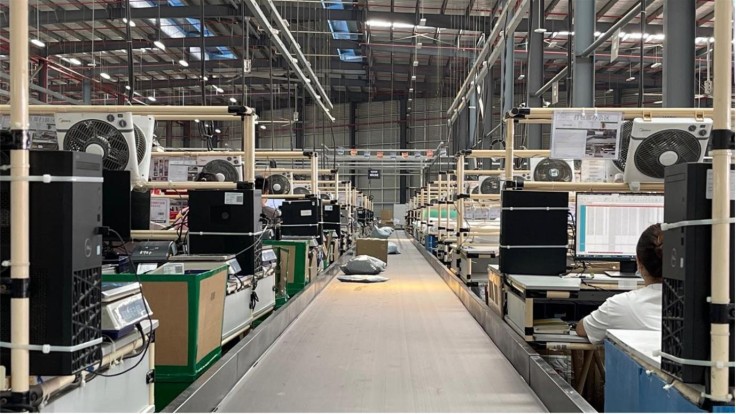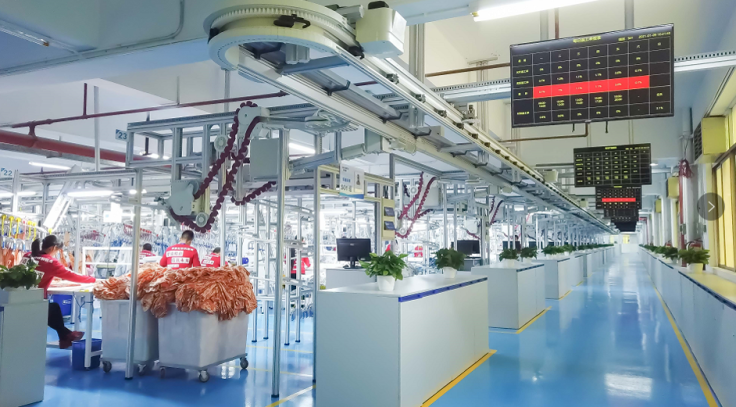
Last month, SHEIN announced that Marcelo Claure had been appointed Chairman of SHEIN Latin America with Sky Xu, CEO of SHEIN, describing Claure as being "instrumental" to SHEIN's expansion the Latin America market.
In a press statement, Claure said joining SHEIN was a "unique opportunity" to "drive economic opportunities and job growth" in the region together with SHEIN, citing countries like Mexico and Brazil, which were at a stage of development where nearshoring, could benefit from SHEIN's supply chain technology, enabling local supply chains to "flourish".
As a "mobile-first, digital only" fashion retailer, SHEIN sells to customers in more than 150 countries who have different fashion needs. Yet, SHEIN is able to meet customers' expectations with affordable products using its unique business model of on-demand, small-batch production model and agile supply chain.
Having a vertically integrated supply chain and on-demand production model allows SHEIN to produce in small batches of 100-200 units per SKU, and this enables its new products to get to the market quickly. Using real-time feedback from sales data, production for a subsequent batch is only ordered if the product does well. If not, production for that product will be halted if sales are not expected. SHEIN's network of supplier factories has access to its proprietary software to receive information about sales and suppliers are empowered to decide if they want to increase production.

The decision to produce is backed by real-time feedback of products that are in demand and current fashion trends, instead of guessing months ahead of what might be in style next season. SHEIN's technology-driven test and learn approach is unlike the traditional garment manufacturing industry where factories must produce at least thousands of pieces per order in advance, only to accumulate excessive inventory and waste when their fashion prediction turns out wrong.
Furthermore, without the pressure to stock physical storefronts as an online-only retailer, SHEIN does not have to produce to fill up brick and mortar shops, preventing the problem of overproduction and waste. By minimizing overproduction, the cost of production can be reduced. The cost savings are then passed to customers worldwide in the form of affordable products in a wide variety of styles that suit different fashion needs.
By producing in small batches at high frequencies, SHEIN has been able to maintain a sell-through rate of as high as 98%. Compared with traditional retailers where excess inventory could be up to 30%. Such unsold inventory will inflate the prices of the products as the cost of the excess inventory is built into retail prices. SHEIN has been able to limit excess inventory to single digits, a percentage that is quite different from traditional retailers and one that results in substantially less waste, allowing SHEIN to provide affordable products to consumers.
If industry players could adopt SHEIN's innovative on-demand production as a solution to overproduction, the collective waste generated would be reduced greatly, thus lessening the impact on environment. There have been other companies who have tried to replicate the agile and cutting-edge supply chain technology pioneered by SHEIN, in what is seen as increasingly becoming the standard for cross-border e-commerce companies.
Headquartered in Singapore, SHEIN was set up in 2012 and today sells to more than 150 countries. As SHEIN continues to grow its presence globally, it will deepen its localisation plans, which can help in achieving targets set in September 2022 to reduce overall emissions across its entire value chain by 25% by 2030. By increasing supply chain nearshoring and onshoring, more sea freight can be enabled, and dependence on air freight deliveries can be reduced. Last year, SHEIN set up its first international distribution center in Indiana in the United States with another two expected to be opened in the US this year, as well as in the EU. SHEIN's plans to open more distribution centres in key markets will help to further reduce shipping times to consumers.
With its unique on-demand business model, SHEIN has been living up to its promise of making the beauty of fashion accessible to all - a vision that Claure said made him "inspired", when announcing his appointment to SHEIN. He will also be making an investment of US$100 million in SHEIN, underscoring his commitment to lead the way in the company's expansion in the region. Claure will help with the formation of a board to advise SHEIN on Latin America.
The partnership between SHEIN and Claure could see exciting developments ahead as SHEIN charts its growth in Latin America.









